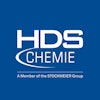Defoamers in biotechnology
In the biotechnology industry, a wide variety of causes sometimes lead to considerable foaming. Frequent consequences: Disruptions to operating processes and losses of considerable production quantities.
Our partner's intelligent STRUKTOL defoamers eliminate foam or prevent its formation. They meet various requirements and applications, support process stability, optimise the quality of the end products and prevent contamination and other negative effects. When used properly, they have no negative influence on the individual process steps.
Contact

Applications
All about defoamers
Why do you need defoamers?
Foam formation in fermentative processes is caused by the presence of foam-active substances in the fermenter broth, escaping gases/air and turbulence in the fermenter.
The substrates used are mostly rich in carbohydrates, some of which are saccharified with the help of enzymes. Foaming agents are the sugars, starches and proteins themselves and other accompanying substances or ingredients, some of which contain trace elements that are important for the microorganisms. Furthermore, amino acids and proteins formed by the microorganisms during fermentation can lead to considerable foaming.
Product preparation
After fermentation is complete, the end products must be isolated from the fermentation broth. The processes used for this differ fundamentally depending on whether the end product is solid or liquid. Schill + Seilacher "Struktol" GmbH has a range of defoamers specially developed for the cementation industry. By skilful pre-selection, disturbing influences of the defoamer during preparation can be minimised.
The formation of foams during the production of bioethanol is mainly caused by the presence of foam-active substances in the substrates used (sugar-, starch-based), e.g. proteins, as well as their degradation products in connection with flow turbulences in aqueous media.
Struktol defoamers are effective in substrate preparation (mash), yeast cultivation, during fermentation operation, as well as distillation.
The most effective defoamer product, the necessary dosing quantities and the most suitable addition points depend on various parameters and must be determined individually for each production site through operational tests.
Dosing of defoamers
Without the addition of defoamers, fermenters would overfoam, which, in addition to the loss of considerable amounts of product, would lead to fouling and associated negative effects. In most cases, defoamers are dosed into the upper fermenter area as required, controlled by a foam probe.
The type of defoamer dosing depends on the fermentation process. In general, the required quantity is automatically controlled over the entire fermentation process and can increase or decrease depending on the type of fermentation (alcohol or yeast production). In other fermentations, the substrates are presented together with the defoamer and then additionally dosed automatically, especially towards the end of the fermentation (enzyme and antibiotic production).
Defoamer selection
The most important factors are effectiveness against the substrates used and indifference to the fermentation process and end product. Struktol defoamers are characterised by extremely low influence on oxygen transfer, which leads to optimal yields and high quality of the end products.
Based on our many years of experience and the extensive, competent, innovative and professional cooperation with our partner Schill + Seilacher "Struktol" GmbH, we are able to offer comprehensive advice on application techniques and are very happy to assist you on site.
